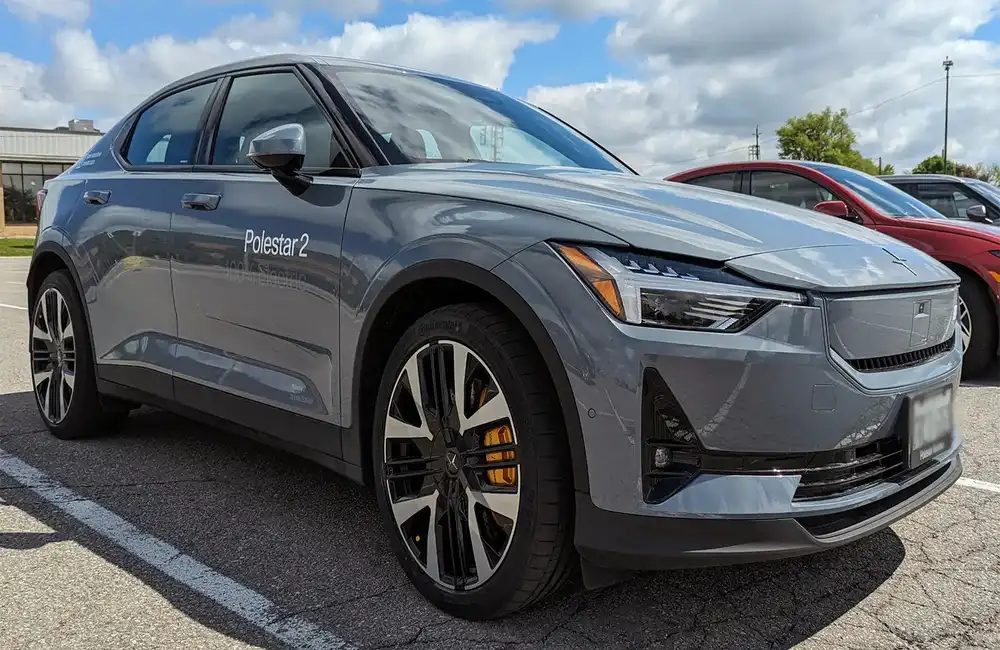Polestar, the Swedish electric vehicle (EV) manufacturer with a focus on cutting-edge design and performance, has charted a bold and distinctive regional approach to its global growth strategy.
By prioritising Europe over other key markets, the company is seeking to capitalise on Europe’s robust EV adoption rates, supportive regulatory environment, and eco-conscious consumers. This article will examine the rationale behind Polestar’s Europe-first strategy, its potential benefits, and the challenges that could emerge in its pursuit of market leadership.
Why Focus on Europe First?
Europe’s Accelerated EV Adoption
Europe is leading the global EV transformation. Nations such as Norway, Germany, and the Netherlands boast some of the highest EV adoption rates in the world, spurred by strong government subsidies, tax incentives, and consumer demand for sustainable alternatives to internal combustion engine (ICE) vehicles. According to the European Automobile Manufacturers’ Association (ACEA), EVs made up 20% of all new car registrations in the EU by the end of 2022, a trend that shows no signs of slowing. By focusing first on Europe, Polestar is tapping into a market that is already primed for EV adoption.
Regulatory Landscape Favouring EVs
Polestar's decision aligns with Europe's progressive policies favouring green mobility. The European Union’s strict CO2 emissions standards and future bans on ICE vehicles in some countries (e.g., 2035 for most EU nations) create fertile ground for EV manufacturers. By making Europe the epicentre of its efforts, Polestar is positioning itself as a compliance leader while meeting consumer expectations aligned with sustainability goals.
Strong Brand Alignment with European Values
Polestar has built its brand around minimalistic Scandinavian design and sustainability, resonating deeply with European consumers. Europe, as a region with particular appreciation for eco-consciousness and clean aesthetics, offers a natural alignment with Polestar’s identity. This synergy strengthens brand equity and differentiates the company from competitors operating at scale.
Infrastructure and Supply Chain Maturity
Europe has invested heavily in EV infrastructure, with a larger and more reliable charging network compared to emerging markets in Asia or North America. Additionally, its mature automotive supply chain facilitates easier production, logistics, and delivery processes. This becomes especially critical when operating in a capital-intensive industry like EV manufacturing.
What Benefits Could Polestar Reap?
Early-Mover Advantage
Polestar's emphasis on Europe increases its chances of dominating a region where the EV market is less saturated compared to that of the United States or China, particularly in the premium vehicle segment. By building customer loyalty early and rapidly gaining market share, Polestar could set a foundation for revenue growth and long-term profitability.
Sustainability Leadership
Transparency in sustainability reporting has become increasingly essential for businesses operating in Europe. Polestar’s commitment to achieving climate neutrality (most notably with the "Polestar 0" project designed to produce a completely carbon-neutral vehicle by 2030) positions it as a frontrunner in both innovation and ethical policies. This emphasis aligns with European consumer expectations and regulatory trends, giving Polestar enhanced credibility.
High-Value Customers
Europe is home to markets with highly discerning, affluent buyers who seek innovative and environmentally responsible solutions in their purchases. Polestar's premium EVs align squarely with these values, providing strong opportunities for higher-margin sales.
Strengthening Global Credibility
By succeeding in Europe’s challenging and competitive market, Polestar could consolidate its reputation as a trusted, premium EV manufacturer. A strong foothold in Europe could build momentum for future expansions into geographically diverse regions, including Asia-Pacific and North America.
What Challenges Lie Ahead?
Intense Competition
Europe’s EV market is becoming increasingly crowded. Global leaders such as Tesla and Volkswagen are competing aggressively for dominance, along with rising entries from Mercedes-Benz and BMW. For Polestar to sustain growth, it must find ways to differentiate itself beyond its Scandinavian design ethos.
High Consumer Expectations
European EV consumers are well-informed and demand best-in-class quality, technology, and service. Polestar must meet these expectations consistently while continuing to innovate in areas such as battery technology, range, and charging times.
Rising Production Costs
Economic pressures, such as inflation and fluctuating energy prices, put strain on production costs. The company’s reliance on a streamlined, premium product offering (fewer models, higher specs) may limit its ability to compete aggressively on pricing without eroding profit margins.
Supply Chain Pressures
While Europe offers a mature supply chain, it is not immune to global disruptions, whether due to geopolitical concerns or raw material shortages essential for EV batteries. Polestar’s ability to manage and diversify its supply chain will be critical to maintaining production timelines and output.
Slow Expansion into Non-European Markets
By prioritising Europe, Polestar risks losing valuable time and market share in non-European regions where competitors are already investing heavily. North America and China, in particular, offer immense growth potential that may be harder to capitalise on later.
How Polestar Can Strengthen Its Europe-First Strategy
Invest in Innovation
Continue advancing in battery technology to address concerns like range anxiety and charging speed, giving Polestar a clear technological edge over competitors.
Expand Infrastructure Partnerships
Collaborations with charging networks (such as Ionity and other pan-European players) can improve convenience for Polestar drivers and strengthen brand reliability.
Enhance Community Engagement
Lean into European values by fostering customer trust through transparency in sustainability efforts, actively engaging with local communities, and showcasing progress on climate-neutral initiatives.
Maintain Pricing Discipline
While going premium is core to Polestar’s identity, creative financing solutions, such as subscription models, could entice more price-sensitive customers without detracting from exclusivity.
The Bigger Picture of Polestar’s Strategy
By focusing on Europe as the launchpad for its ambitious growth, Polestar has made a calculated move that leverages the region’s favourable conditions for EV adoption. While challenges undoubtedly remain, the opportunity for significant gains is equally immense. With sustained innovation, strategic partnerships, and a commitment to its core values of sustainability and design, Polestar is increasingly securing its place as one of Europe’s most exciting premium EV brands.
For Polestar, Europe is not just another market; it is the proving ground for its global ambitions. Remaining agile and proactive will be essential as the company navigates one of the most dynamic technological transitions in automotive history.






















